Industrial Ethernet Cables
Choosing Between 24 AWG, 26 AWG and 28 AWG Cables for Industrial Ethernet
Selecting the appropriate AWG cable is key to the performance and reliability of industrial Ethernet. The AWG, a metric to indicate conductor thickness or gauge, is important because a 24 AWG cable (thicker) versus a 26 AWG (thinner) cable will impact Power over Ethernet (PoE), signal strength, and installation ease. If you plan on using PoE or need the cable to travel longer distances, 24 AWG cables are necessary to engineer the needed power and work with PoE to travel longer distances.
Each cable type, like CAT5e Ethernet cable, CAT6a, and OFC cable, has different AWG sizes, and they are specific to networking types. For example, industrial connectors, like the M12 series, require a compatible AWG to ensure connectivity reliability where they are used. Reference the established standards from TIA and IEEE for future-proofed cables to ensure you are meeting the current industrial Ethernet requirements for performance and durability.
Showing all 20 results
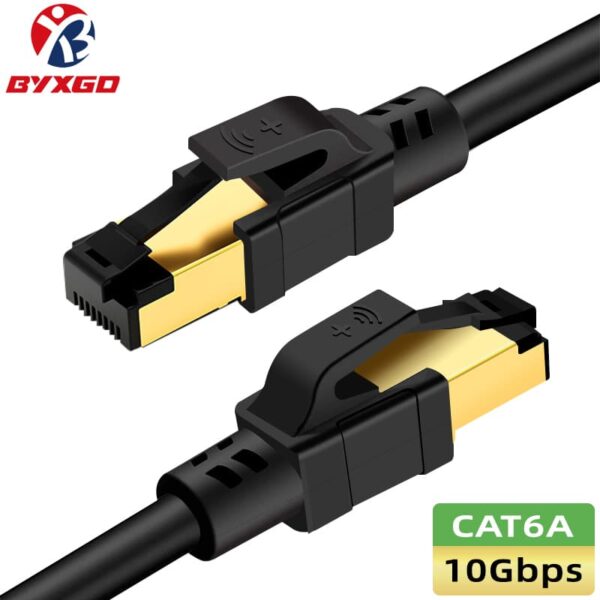
10Gbps Ethernet Cable – CAT6A/CAT5E, 24AWG/26AWG/28AWG, RJ45 Available, High-Speed Network Patch Cord
Price range: $13.00 through $110.00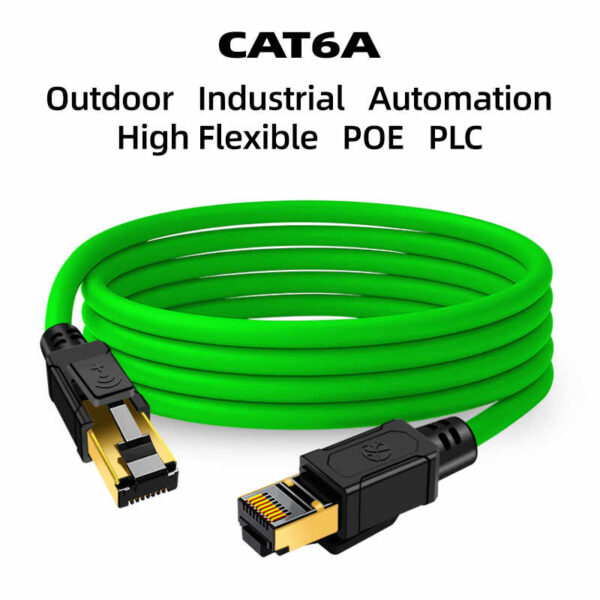
1ft (0.3m) RJ45 Connector CAT6A 26AWG Shielded (S/FTP) Industrial Ethernet Network Patch Cable for PROFINET/Siemens, POE & PLC
Price range: $17.99 through $469.00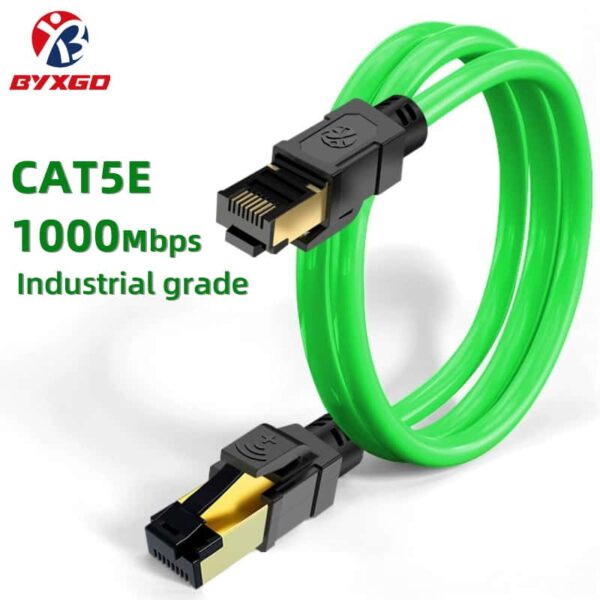
50 ft CAT5E Ethernet Cable for PROFINET & Siemens – Double Shielded, Brass RJ45 Connectors, PVC Jacket
Price range: $14.00 through $22.00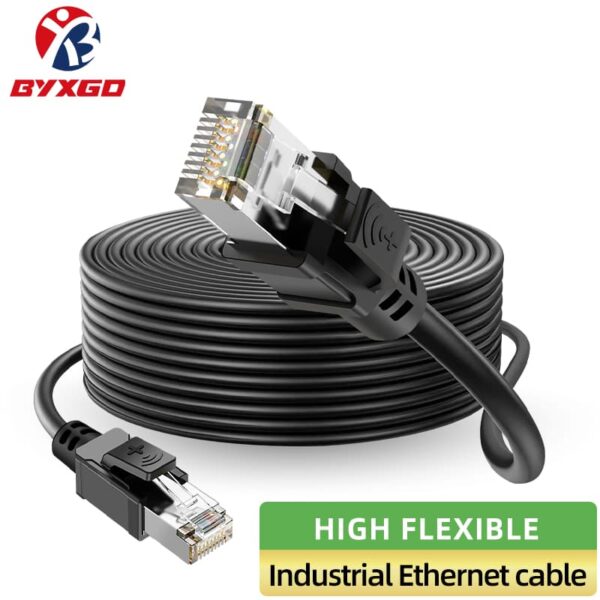
CAT5E Double Shielded Ethernet Patch Cable (24AWG/26AWG) – STP, POE & PLC Support for PROFINET & Siemens
Price range: $13.00 through $119.00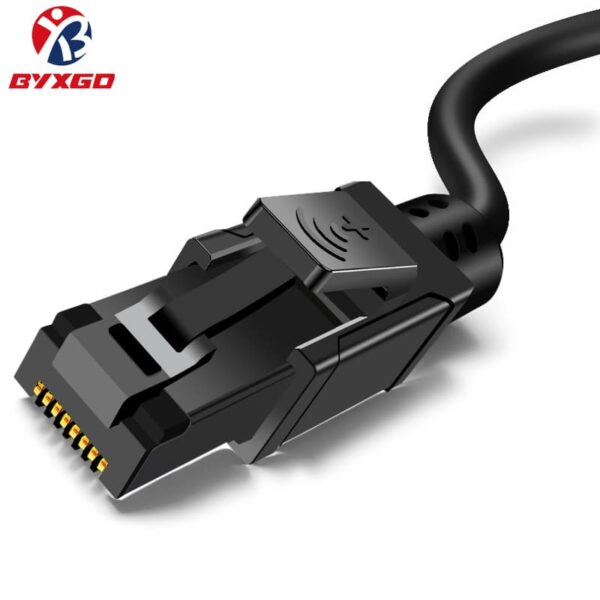
CAT6 Patch Cable (0.3-30m) – RJ45 Connector Pure Copper Gigabit Ethernet Cable for Home, Industrial and Outdoor Networks
Price range: $16.00 through $89.00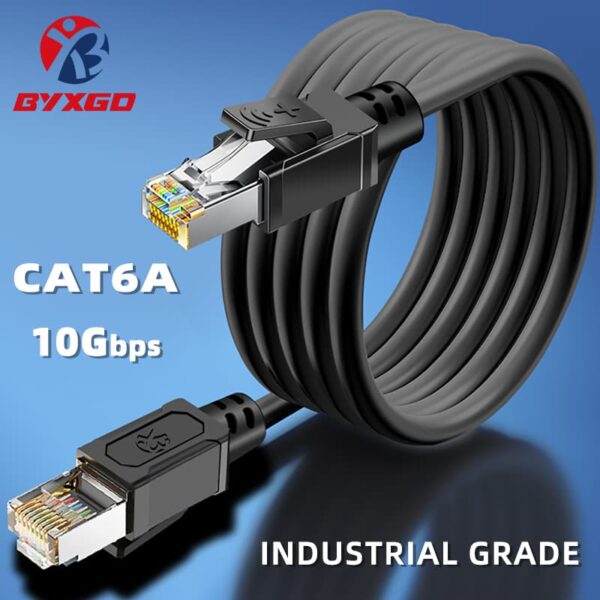
CAT6A 10Gbps LAN Cable – Flexible RJ45 Ethernet Cable for Siemens, PROFINET, Powerlink, PS5 and PC
Price range: $11.90 through $16.90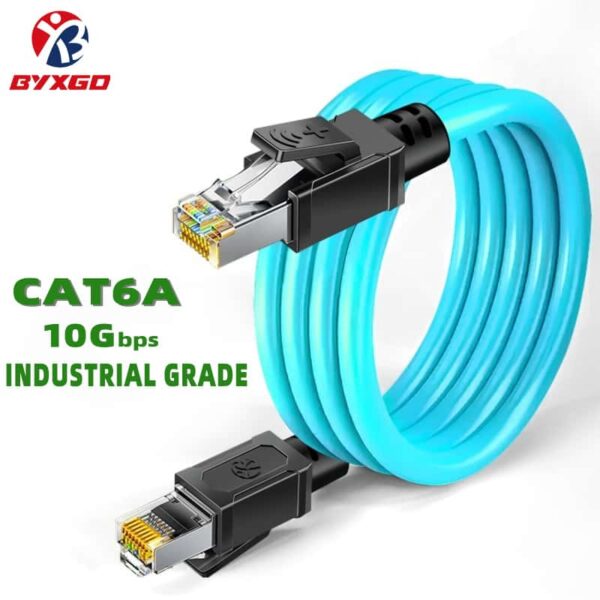
CAT6A Industrial Ethernet Cable – 10Gbps RJ45 LAN Cable for Siemens, PROFINET, EtherCAT & Gaming (PS4/PS5/PC)
Price range: $13.90 through $119.00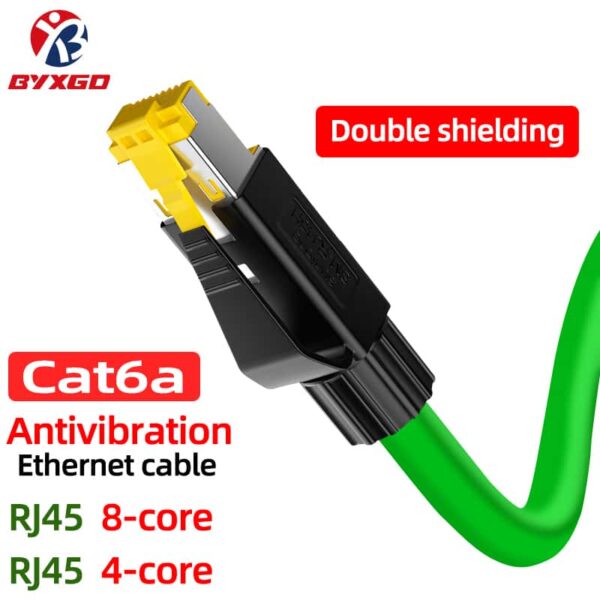
CAT6A Outdoor Ethernet Cable – Flexible, Shielded RJ45 POE Network Cable for Siemens & Profinet PLCs
Price range: $22.60 through $122.00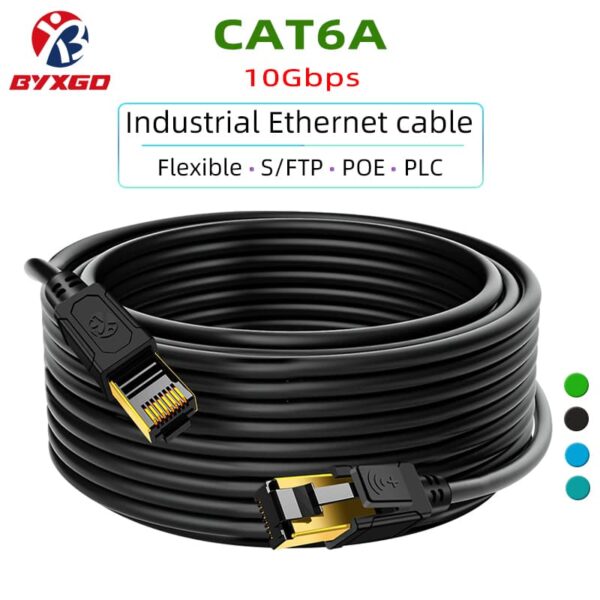
CAT6A RJ45 Connector Industrial Ethernet Cable, S/FTP Shielded for PC, Switch, EtherCAT, PROFINET, Siemens, POE, and PLC Networks
Price range: $7.00 through $88.00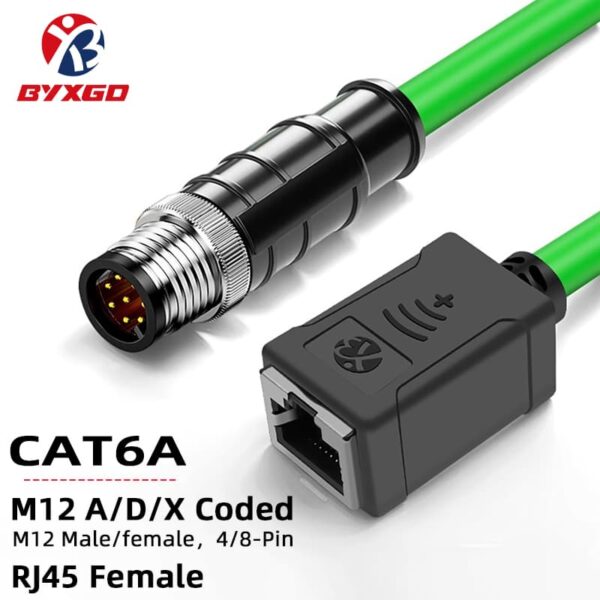
CAT6A S/FTP Shielded Industrial Ethernet Cable, M12 A-coded Male to RJ45 Female, 8-Core
Price range: $0.99 through $65.00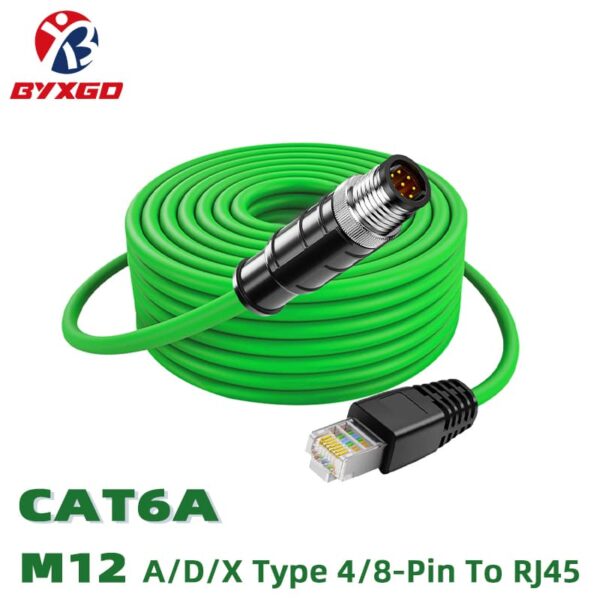
CAT6A Shielded M12 to RJ45 Cable, 4/8-Pin Connectors, A/D/X Code, for Industrial Networks
Price range: $15.00 through $106.00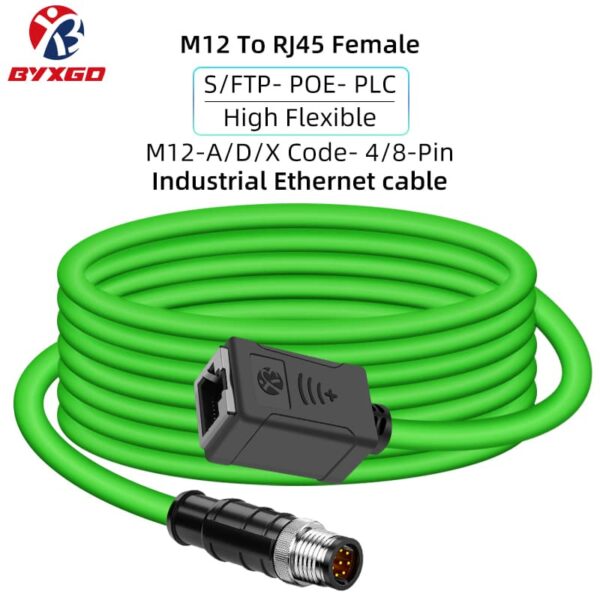
Female RJ45 to M12 Male A/D/X Code Industrial Ethernet Cable – S/FTP Shielded, High-Flex Extension Cable
Price range: $20.00 through $130.00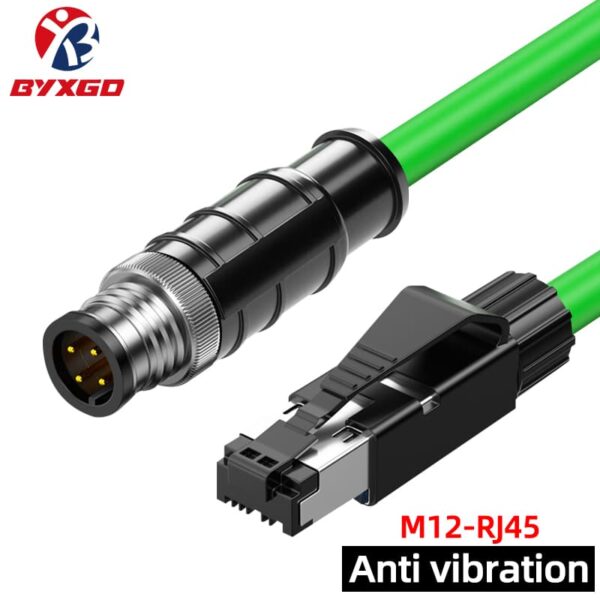
High Flexible RJ45 to M12 4 Pin Cable – S/FTP Shielded, Anti-Vibration, A/D Code Connector
Price range: $23.00 through $106.00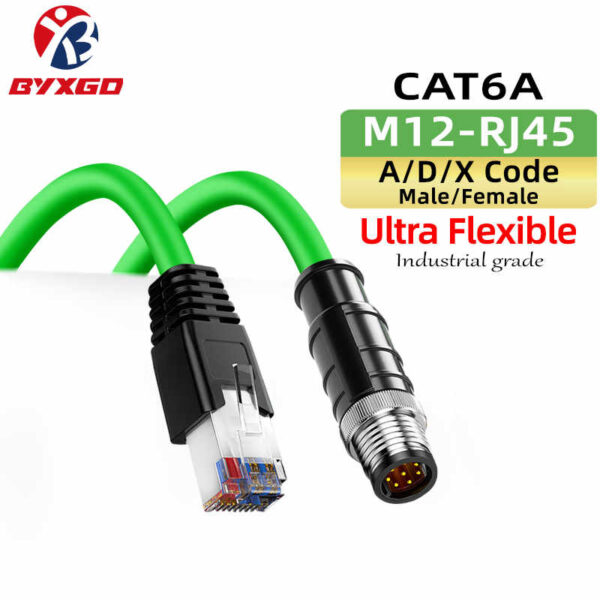
M12 Connector to RJ45 Connector Ethernet Cable, Cat5E/CAT6A, A/D/X Code, 4/8-Pin Male/Female, For PROFINET/Siemens
Price range: $4.96 through $86.00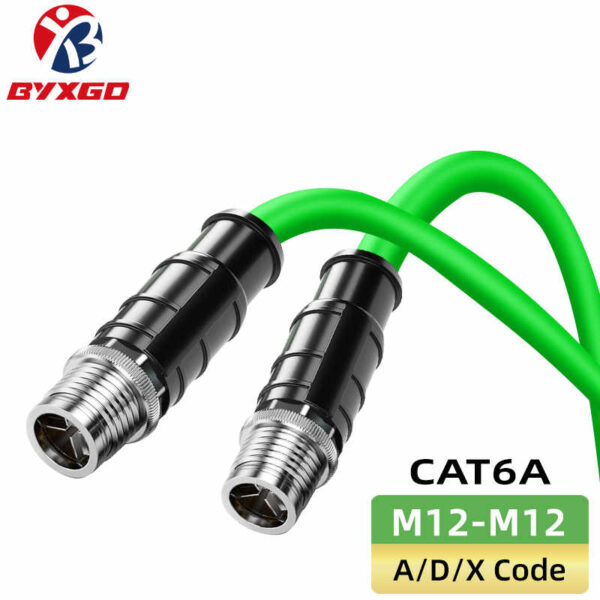
M12 to M12 4/8 Pin Connector, A/X/D-Coded, CAT5E/CAT6A 26AWG Flexible Shielded (S/FTP) Ethernet Network Patch Cable
Price range: $18.90 through $136.00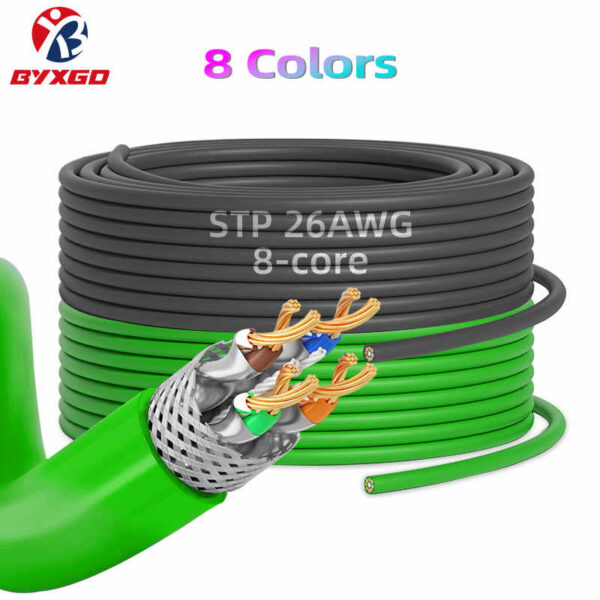

RJ45 Cable CAT6A for PROFINET, Powerlink, EtherCAT, Allen-Bradley PLC, Siemens, PS4/PS5, PC, and Router
Price range: $12.00 through $17.00
RJ45 Connector CAT5E/CAT6A 90 Degree Thin Patch Cable, Flexible Outdoor Network Cable for Profinet/Siemens/POE/PLC/Camera
Price range: $15.90 through $99.00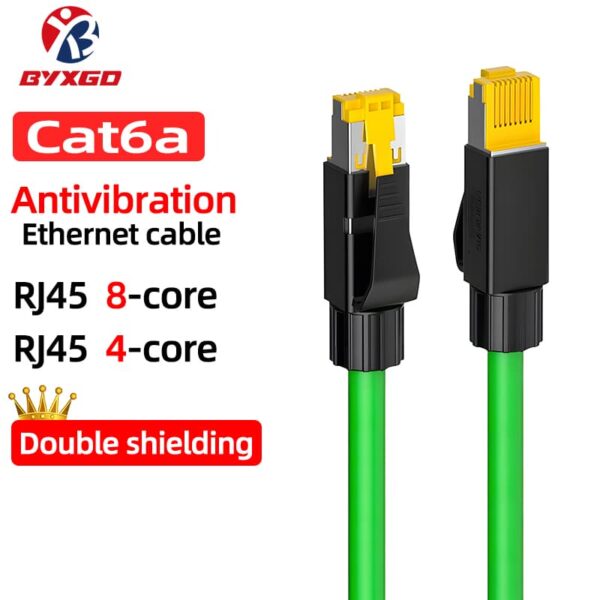
RJ45 Connector Shielded Industrial Ethernet Cable
Price range: $24.00 through $125.00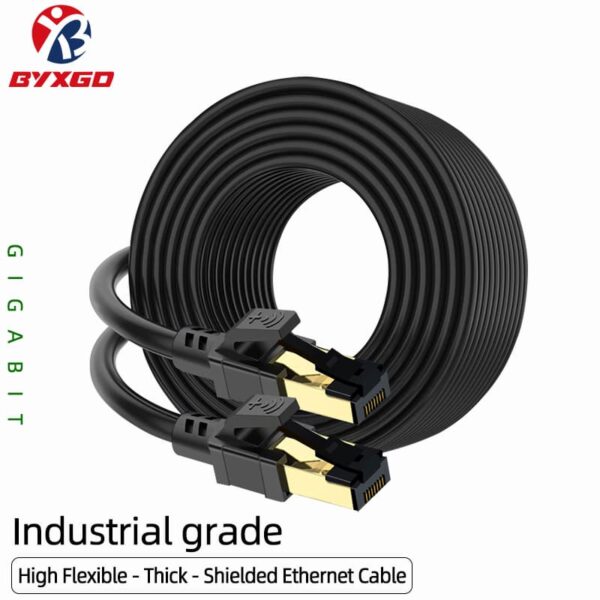
Shielded RJ45 Connector Gigabit Industrial Ethernet Cable for Switches, Siemens, PROFINET, Outdoor Applications & Cameras
Price range: $13.00 through $120.00Understanding AWG and Its Impact on Industrial Ethernet Cables
The American Wire Gauge (AWG) system is a measuring system used for the size of conductors in cables—the smaller the AWG number, the thicker the conductor. For example, 24 AWG cables have thicker wires than 26 AWG or 28 AWG cables, which translates to lower electrical resistance. With low resistance, the thicker conductors will have better signal integrity over longer distances—and this is an important factor for industrial Ethernet applications.
24 AWG cables tend to have better signal characteristics, less signal attenuation, and are able to deliver more power, which can be an important factor for applications with Power over Ethernet (PoE)—and even more significant with PoE++ devices. On the contrary, 26 AWG and 28 AWG are "thinner," and as a consequence, more flexible—this is especially useful for tight spaces or shorter cable runs where the physical installation is more of a consideration than maximum distance.
The size of conductors also has an effect on heat dissipation and greater resistance to electromagnetic interference—both factors are important in any industrial environment, especially in terms of robust industrial Ethernet cables that are designed to work in heavy-industrial environments. To highlight the comparison:
| AWG Size | Diameter (mm) | Max Distance (Cat5e/Cat6a) | Flexibility | PoE Support |
| 24 AWG | 0.51 | Up to 100 meters | Lower | High (PoE++) |
| 26 AWG | 0.40 | Up to 100 meters | Moderate | Medium |
| 28 AWG | 0.32 | ~15-50 meters | High | Limited |
Being aware of these electrical and physical characteristics will help you settle on the right AWG size for applications using CAT5e Ethernet cable, CAT6a, or OFC cabling. Making the appropriate gauge selection will result in dependable and effective power delivery and ease of installation, all of which is subject to TIA and IEEE industrial Ethernet specifications.
Industrial Ethernet Cable Types and Their Suggested AWG Sizes
Industrial Ethernet will typically fall into a few cable categories, each of which is designated for specific performance and environments. Common types of cable include CAT5e Ethernet cable, CAT6a, or oxygen-free copper (OFC) cables. These categories of cables are all differentiated through bandwidth, shielding, and conductor quality, which reflects on the gauge of the cable for the job and the application for which they are best suited.
For example, CAT5e Ethernet cable would typically be rated at 24 AWG conductors as the expense versus performance is appropriate for the common industrial application at 1 Gbps. Alternatively, CAT6a wires are generally rated at 24 AWG or 26 AWG for greater bandwidth and reduced crosstalk, and are more ideal than CAT5e cable when a high-speed application or longer-distance run has to be considered. Then there are OFC wires, known for better conductivity and clearer signals, that are typically rated similarly to CAT5e and CAT6a with a general rating of 24 AWG to aid performance in difficult industrial environments.
In industrial settings, shielding is very relevant. The main types of shielding are shielded Ethernet cables of various types, which include: STP (Shielded Twisted Pair), FTP (Foiled Twisted Pair), or S/FTP (Shielded Foiled Twisted Pair) cables. The shielded cable types generally use thicker and thus naturally will use larger conductor sizes to perform better, such as 24 AWG or 26 AWG, which will help resist electromagnetic interference (EMI). UTP cable (unshielded) tends to use thinner gauges, such as 26 AWG or 28 AWG, to perform well in a low-interference indoor setting.
Below is a summary chart to show the cable types, AWG sizes, and potential uses, as well as the general expected EMI protection level:
| Cable Category | Common AWG Sizes | Shielding Type | Typical Applications |
| CAT5e ethernet cable | 24, 26 | UTP, FTP | General industrial and office |
| CAT6a | 24, 26 | STP, FTP, S/FTP | High-speed data, PoE+, outdoor |
| OFC cable | 24 | Often Shielded | High-performance, critical links |
| Patch Cable (short runs) | 26, 28 | UTP | Dense racks, flexible installations |
Selecting the appropriate AWG size and shielding configuration helps to ensure a robust level of data integrity and minimize signal loss when subjected to electrical interference, which is vital in order to support the reliability and efficiency of your industrial Ethernet network.
AWG Selection Based on Application for Industrial Use
When using industrial Ethernet, application-focused and customized cable selections are necessary to support performance limitations, along with electrical power delivery and preferences between installation requirements. The selection of AWG size based on the use of Outdoor Ethernet Cable, PoE Cable, or interconnection from M12 to M12 has a comprehensive impact on practicality, network performance, and serviceability.
If PoE++ network backbone runs are long-distance outdoor cables, we recommend using 24 AWG cable. The thickness of the conductor creates less resistance and heat build-up, allowing power to be delivered throughout the run, again, under reasonable service conditions and lengths, to upwards of one hundred meters. Note that these cables are often used in combination with industrial-rated CAT6a shielded M12 connector series or PROFINET-type cabling, which, when used together, can withstand abusive environmental conditions and excessive electromagnetic interference.
Medium-distance runs on work environment floors, factory floors, or production lines usually benefit from a 26 AWG cable. This standard size provides a reasonable balance of electrical performance and serviceability with the lengths of run necessary for industrial electrical use. This size of cable can also be used in conjunction with M12 4-pin or 8-pin connectors or cable connection types (M12) related to M12 A-coded connectors, M12 D-coded connectors, or M12 X-coded connectors. These issues can easily be addressed while beneficially using a 26 AWG cable to transmit reliable data and moderate PoE loads, all while considering cost aspects that would not detract from performance.
28 AWG cables provide excellent overall performance, especially in potentially interfaced or congested conditions, where the small size and flexible cable type will allow for movement. You will find these cables in areas like cabinets, closets, or patch panels where space is limited, and shorter runs need to be performed. As noted, they will not be able to hold the same degree of performance under electrical power use as the thicker AWG cables do, but when intended to be used as service or connection points for density with maneuvering cable sections, they can perform.
Key Recommendations:
- 24 AWG: Long runs outdoors and shielded cabling, PoE loads for heavy electrical use.
- 26 AWG: Mid-distance cabling with cost considerations for performance.
- 28 AWG: Short-distance cabling for patch cable use and flexible usage in cabling management.
The appropriate use of conductors, along with the appropriate shielding, connectors, and standards for electrical service (M12, etc.), all contribute to robust networks that can adapt to the conditions of operational needs and the challenges of the industrial environment.
Comparative Chart with Detail: 24 AWG vs 26 AWG vs 28 AWG for Industrial Ethernet
Wide selections of the industrial Ethernet cable gauge matter in making parallels of usage with industry-related products for connection with telecommunication products, i.e., CAT5e or CAT6. The following comparison chart illustrates key technical (performance) and practical differences by category position.
| Specification | 24 AWG | 26 AWG | 28 AWG |
| Electrical Resistance | Lowest, enabling minimal signal loss | Moderate resistance for balanced performance | Higher resistance, more attenuation |
| Maximum Recommended Distance | Up to 100m (328 ft), per TIA/EIA standards | Generally up to 100m, optimal for moderate runs | Shorter runs (~15-70m), ideal for patch cables |
| PoE Support Level | Supports high power PoE++, suitable for demanding devices | Supports PoE and limited PoE+ | Best for low-power PoE, limited for high power |
| EMI Resistance | High when paired with shielding (STP, FTP, S/FTP) | Moderate to high with shielded cables | Mostly unshielded, lower EMI protection |
| Installation Flexibility | Least flexible, bulkier with thicker conductors | Moderate flexibility for easier routing | Highly flexible, preferred for dense cabling |
| Cost | Relatively higher due to more copper usage | Moderate cost, balanced option | Lowest cost, less copper content |
This comprehensive comparison lays out the performance vs. flexibility and cost trade-offs. As an example, a 24 AWG CAT6 shielded cable is great for long-distance, high-powered PoE installations, while 28 AWG patch cables are fantastic for flexible, shorter-distance patch runs inside control cabinets or racks. By selecting the proper AWG and shielding, using options like 24 AWG, gives you a strong, reliable industrial Ethernet network infrastructure.
This table helps further explore some of the related specifications needed for cable selection in an industrial environment without further reference to previously stated technical explanations.
FAQs
What are PoE++ requirements for AWG cables?
PoE (802.3bt) relies on lower resistance cables to deliver more power safely. Typically, 24 AWG cables accommodate PoE++, while 26 AWG may also be fine with a moderate load. 28 AWG is generally not used for heavy PoE devices because of increased resistance and heating.
Can 28 AWG cables support 10Gbps speeds?
Yes, many well-made CAT6a 28 AWG patch cables can achieve 10Gbps data rates at average distances under 100 meters using the complicated manufacturing process and improvement of shielding throughout the cable. However, they are generally used for shorter or flexible patch runs.
How do AWG differences affect cable flexibility and installation?
Smaller AWG numbers (thicker wires) will tend to result in decreased flexibility and bulkier cables with more difficult routing. 28 AWG cable is significantly more flexible, which is ideal for dense or indoor cabinets and racks, while 24 AWG is stiffer, making it more appropriate for longer and higher-performance runs.
What are the AWG differences in CAT5, CAT5e, and CAT6?
As a convention, CAT5e and CAT6 cables commonly use 24 AWG for backbone runs, which provide stable high-speed connectivity. However, some slim and flexible patch cables may also utilize 26 or 28 AWG cables to gain performance while saving space and weight.
These practical responses clarify operationally driven choices related to minimum AWGs without redundancy of the keywords.
New Standards, New Technologies, and Their Role in AWG Selection
Recent advancements in industrial Ethernet standards have impacted how cable gauge selection aligns with changing network criteria. One such new standard is IEEE 802.3bt, commonly referred to as PoE++, which has increased power supplied to PoE from 32W to nearly 100W, a threefold increase! Increased power demands lead to the consideration of thicker conductors, such as 24 AWG, which can help reduce opposition and heating of conductors when powering devices over Ethernet. 28 AWG conductors typically cannot support these higher PoE levels safely while still maintaining performance requirements.
The other part of the standards evolution is Single Pair Ethernet (SPE), which provides a different type of cabling solution for constrained size and cost by moving away from four-pair conductor specifications. This presents an opportunity to think through the AWG size in some industrial applications where weight and space need to be considered.
Some other considerations are associated with shielding technology as a method for reducing electromagnetic interference (EMI) and possibly increasing security. The type of cable—STP, FTP, S/FTP, or other types of shielding—allows for different levels of protection. For example, CAT6a shielded cables and M12 X-coded connectors will limit EMI in many industrial environments. All types of shielding and standards can limit or eliminate interference issues, including reducing cyber intrusion in some industrial settings.
Also, industrial connectors like the M12 A, D, and X-coded connectors may also dictate gauge size connectors since the physical and electrical properties of these cables are crucial. Therefore, even in nondescript AWG applications like considering single-pair and multi-pair cables, the physical and electrical criteria often dictate the selection to guarantee connector life and signal integrity.
A similar consideration is often a compliance aspect like Advanced Physical Layer (APL), which sets maximum lengths and insertion loss. This is potentially beneficial for people using industrial networks. Overall, in their totality, these technologies and standards now play a key role in determining selected AWG sizes when considering power needs for industrial cables, signal requirements, and what is required in the harsh environments of many cabling applications.
In practice, some vendors may leverage these standards to apply cabling technologies and solutions that comply with the potential consequences of modern industrial solutions.
Conclusion
Selecting the appropriate AWG size is critical to various industrial Ethernet applications to help ensure performance, signal quality, power, and ease of installation. For distant, typically high-power PoE applications, 24 AWG works in all metrics. 26 AWG balances cost vs. performance for any relatively standard industrial use. 28 AWG fits flexible needs and is installed in spaces designed to carry signals in its own right, such as manufacturing. Don’t underestimate the benefit and value of appropriate AWG sizes in conjunction with standards that consider power, signal, and the environment for manufacturers, suppliers, and installers.
